Frontier
State of Franklin
Like other western settlers, Tennesseans were often suspicious of the motives of the young federal government.
Part of the reason for this mistrust was because at the beginning, the new U. S. government was too weak to help the settlers defend themselves against Indian attacks. Since attacks occurred with regularity, it must have seemed as if the Tennessee region was being ignored.
Settlers also felt ignored by their home state of North Carolina. Then, in 1784, North Carolina gave the western lands, including Tennessee, to Congress. The settlers decided that it was time to convince the national government to recognize them as a separate state.
The settlers met in Jonesborough in 1784 and elected John Sevier as president of a newly created assembly. But then North Carolina repealed the act of cession, essentially taking the Tennessee land back. Sevier and the assembly decided to go ahead with plans to form a new state.
In March 1785, Sevier was chosen governor of the proposed state of Franklin. William Cocke traveled to Philadelphia to make an appeal to Congress to recognize the new state, but Congress refused without the permission of North Carolina. And the North Carolina governor refused to give permission.
There were two governments in the state—the government of Franklin led by Sevier and government officials who represented North Carolina.
Sevier made an attempt to get a loan from Spain for the state of Franklin, but when it didn’t come through, he gave up the effort. In Middle Tennessee, James Robertson had North Carolina name the counties the Mero District in honor of the Spanish governor at New Orleans. It is not certain why Robertson did this—maybe to discourage Indian attacks by making it seem that the settlers were protected by the government of Spain.
The Constitutional Convention meeting in Philadelphia drew up procedures by which new states could enter the union. Finally, in 1790, North Carolina once again ceded her claims to Tennessee. This time Congress accepted the land and created the “Territory of the United States South of the River Ohio.”
Franklin continued on a short time, but its backers eventually gave up. The territorial government was in charge of the land.
For the North Carolina History Project on the State of Franklin, click here.
Franklin continued on a short time, but its backers eventually gave up. The territorial government was in charge of the land.
For the North Carolina History Project on the State of Franklin, click here.
Picture Credits:
- A miniature painting of John Sevier. Tennessee State Museum Collection
- A miniature painting of Catherine Sevier by artist Jean Belzons. This is the only known likeness of Sevier's second wife, whom he called "Bonny Kate." The painting was probably done from life since Belzons was known to have lived in South Carolina in the 1790s. Tennessee State Museum Collection, 71.23
- Photograph of the Taylor House in Jonesborough, Tennessee. This photo was taken in 2008 by C. David Cook. Built in 1777 by Christopher Taylor, a soldier during the French and Indian War and a major in the American Revolutionary War; the house was the first permanent structure built in Jonesborough. Courtesy of the City of Jonesborough
- Drawing of a Cherokee attack. This drawing was published in 1889 by Mary Noaliles Murfree in The Story of Old Fort Loudon. It shows a group of Cherokee warriors preparing to attack a group of British soldiers. Tennessee State Museum Collection
Frontier >> Becoming a State >> Early Efforts >> State of Franklin
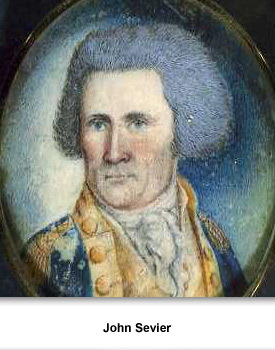
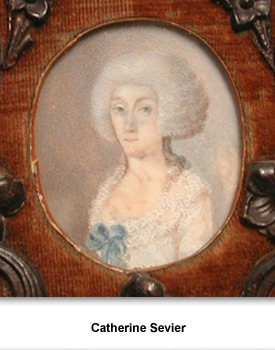
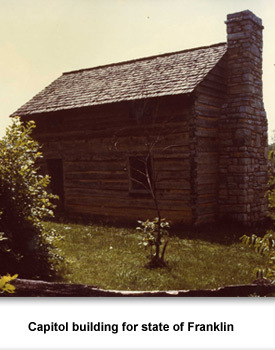
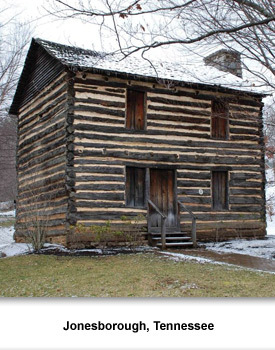
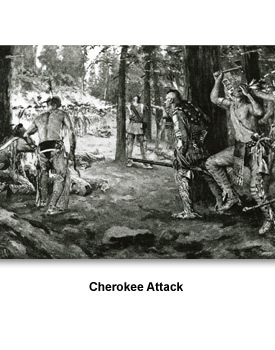
 Sponsored by: National Endowment for the Humanities
Sponsored by: National Endowment for the Humanities